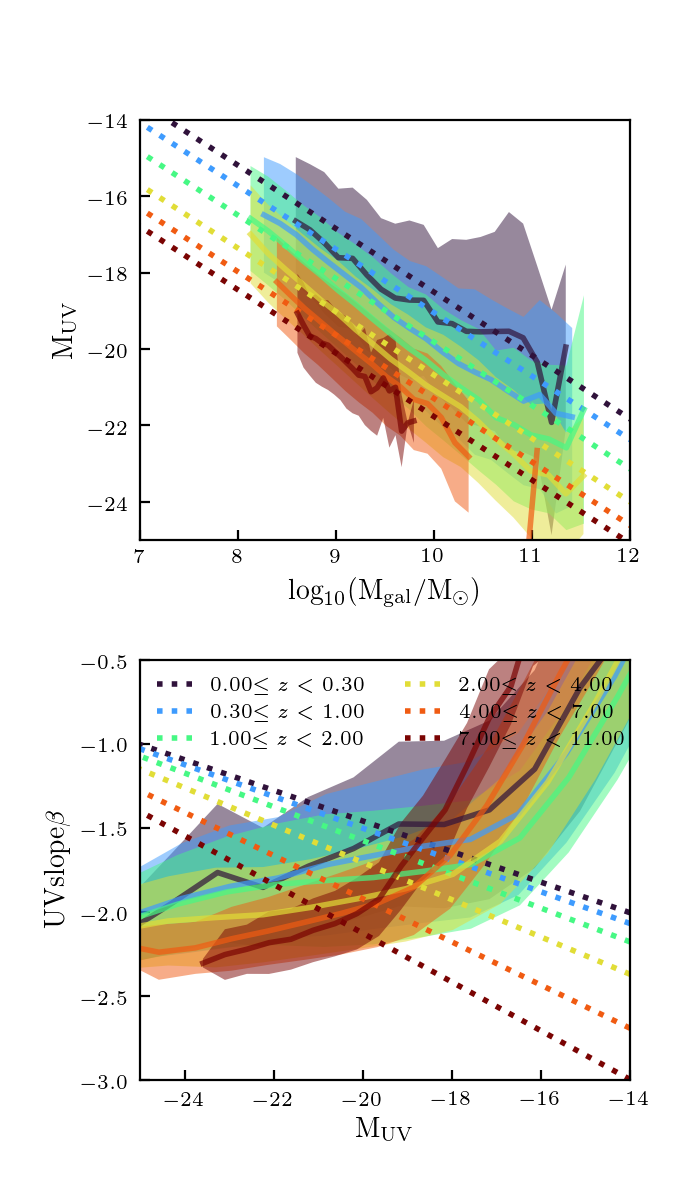Nicole Drakos
Research Blog
Welcome to my Research Blog.
This is mostly meant to document what I am working on for myself, and to communicate with my colleagues. It is likely filled with errors!
This project is maintained by ndrakos
SED Method Updates
In this post, I outlined my methods for calculating SEDs for the galaxies in the mock catalog.
There were two main problems (1) the \(M_{\rm UV}\)–\(\beta\) relationship was backwards and (2) there were some fairly blue quiescent galaxies in the UVJ diagram.
I am fixing of things in my previous implementation to try and address these issues.
UV Continuum slope
Before I was using the redshift 0 SED to calculate \(\beta\).
I am now using equation (1) from Dunlop et al 2012 to calculate the UV continuum slope:
\[\beta = 4.43(J125-H160)-2\]with the SEDs calculated for redshift 7 (with FSPS filters wfc3_ir_f125w and wfc3_ir_f160w).
Results
Here are the UV properties:

This is slightly improved, but the trend is still backwards. Next I will make 2D histograms to figure out why the faint galaxies have such a small slope.
UVJ Diagram
Before I was assigning galaxy ages from a gaussian, without any consideration to whether they were SF or not. I have updated my method of assigning ages. I also fixed it so that I am getting the rest-frame U, V and J magnitudes to check the SF/Q classifications.
As before, I will assign ages based on a weak gaussian in \(\log_{10}(a/{\rm yr})\) with a standard deviation of 0.7. The gaussian will be truncated between 6 and \(\log_{10}(t_{\rm age}/{\rm yr}-10^6)\) for both SF and Q galaxies
For SF galaxies, as before, the Gaussian is centered at 9.3. Since Quiescent galaxies should be older, I will center the ages for this on 13.3 Gyr; this difference of 4 Gyr was motivated by this paper.
I’m not entirely happy with this method, but it is an improvement from my previous method of assigning ages. I couldn’t find any better models for what the age distributions of galaxies should look like (as a function of redshift and possibly mass).
Results
Here is the UVJ diagram, with objects below redshift 0.5. I also added the Williams et al. 2009 selection box.

This looks much better with the different age distribution, but once I put on the selection box, you can see there is still a discrepancy. I want to use a better motivated age distribution. Maybe I can constrain the SF galaxy ages using the UV properties, and then use the same (shifted) distribution for the quiescent galaxies.